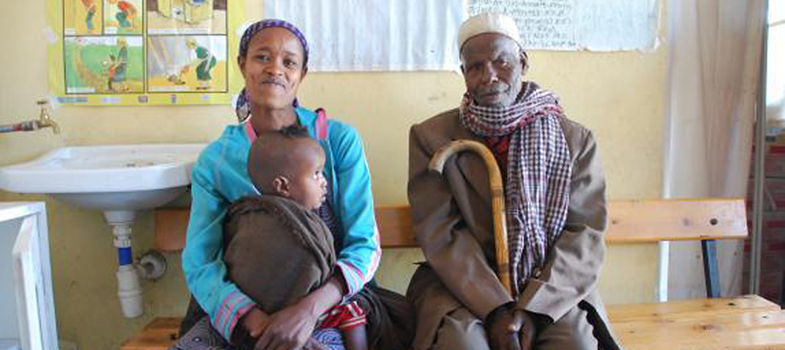Self-Assessment Questions (SAQs) for Study Session 13
Now that you have completed this study session, you can assess how well you have achieved its Learning Outcomes by answering these questions. Write your answers in your Study Diary and discuss them with your Tutor at the next Study Support Meeting. You can check your answers with the Notes on the Self-Assessment Questions at the end of this Module.
Read Case Study 13.3 and then answer the questions below.
Case Study 13.3 for SAQ 13.1
A mother brings her ten-month-old infant to your health post, saying that her child has had an ear discharge for about four or five days and he is crying more than usual. He has no swelling behind either ear.
SAQ 13.1 (tests Learning Outcomes 13.1, 13.2 and 13.6)
- a.How would you classify this infant’s illness? Give reasons for your answer.
- b.What complications might develop from the illness?
- c.How would you treat the infant?
Answer
- a.You should have classified this child as having acute ear infection. This is because the infant has not had pus draining from the ear for two weeks or longer (which would be a sign of chronic ear infection). As there is no swelling, the infant is not showing signs of mastoiditis.
- b.If the infection is not treated, however, it could develop into mastoidistis, which you will recall is a serious condition that requires the child to be referred urgently. Untreated, the infection could also lead to deafness.
- c.The child should be given cotrimoxazole for five days and you should show the mother how to wick the child’s ear each day. She could also give the child paracetamol to ease the pain.
Read Case Study 13.4 and then answer the questions below.
Case Study 13.4 for SAQ 13.2
A four-year-old child is brought to your health post. Her mother says that the child is finding it painful to swallow and she has been feeling very hot to the touch for the last two days. When you examine the child’s throat, you see it is red and there is some yellowish pus.
SAQ 13.2 (tests Learning Outcomes 13.1, 13.3 and 13.6)
- a.How would you classify this child’s illness? Give reasons for your answer.
- b.How would you treat the child?
- c.How would you advise the mother?
Answer
- a.The classification in this case is streptococcal sore throat. You might remember that enlarged and tender lymph nodes on the neck are also signs of this illness.
- b.The treatment includes giving the child the antibiotic amoxycillin and soothing the throat with a safe home remedy such as warm tea or honey. Paracetamol can be given to ease the pain.
- c.You would advise the mother to return immediately if her child’s syptoms became much worse. Otherwise, she should treat the child at home and only return if the child is not showing signs of improvement five days after the visit to your health post.
Read Case Study 13.5 and then answer the questions below.
Case Study 13.5 for SAQ 13.3
A three-year-old boy is brought to your health post because he has some small skin lesions on his neck. The lesions are crusted and have a yellow discharge.
SAQ 13.3 (tests Learning Outcomes 13.1, 13.5 and 13.6)
- a.How would you classify this problem? Give reasons for your answer.
- b.What possible complications are linked with this problem?
- c.How would you treat the child?
Answer
- a.In this case, the child has impetigo, identified by the crusted lesions weeping yellow fluid.
- b.If impetigo is not treated effectively, if can lead to kidney disease.
- c.To treat this condition, the child should be given an oral antibiotic for seven days, with a follow-up visit in five days.
SAQ 13.4 (tests Learning Outcomes 13.1 and 13.4)
Describe how you would treat conjunctivitis, and give reasons for your answer.
Answer
You should have included the following steps in your answer: both eyes should be cleaned three times daily, using a clean cloth for each eye; tetracycline ointment should then be applied in both eyes three times per day until the redness has gone. Other eye ointments or drops should not be put into the child’s eyes.
Summary of Study Session 13
